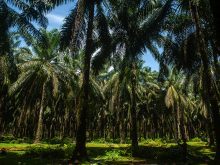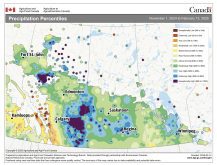Palm oil production is expected to rise only a little this year and global use is rising, leading to expectations that year-end stocks will shrink.
That is usually a recipe for solid price support, but the market is also influenced by policy decisions and energy markets so pricing predictions are hard to make.
Palm oil, produced mainly in Indonesia and Malaysia, accounts for 35.5 percent of all the vegetable oil produced globally, making it the leader, topping soybean oil at 28.25 percent and rapeseed oil at 14.6 percent.
Read Also

Russian wheat exports start to pick up the pace
Russia has had a slow start for its 2025-26 wheat export program, but the pace is starting to pick up and that is a bearish factor for prices.
It usually trades at a discount to soy and rapeseed oil, but its price movements affect the other oils and occasionally it can go on a wild ride that shakes the global vegetable oil market.
In spring last year, palm oil soared to a record high.
Vegetable oils were already rising through the winter on production shortfalls, including the 2021 drought in Canada and dry weather in Argentina and southern Brazil, and on rising crude oil prices, sparked by Russia’s invasion of Ukraine.
Palm production was curtailed by a lack of workers as pandemic rules prevented imported labour from arriving in Malaysia.
As 2021 closed, soaring palm oil values in Indonesia caused public unrest.
The government sharply limited exports to control domestic prices, but that caused the international price to soar to a record. By March, the price on the Malaysian exchange, converted to U.S. dollars, was more than $1,800 per tonne and in a rare move was more expensive than soybean oil.
Indonesia banned exports for three weeks in April and May.
The price then declined quickly as Indonesia dropped the ban and slashed export taxes and levies. Also, the initial panic of Russia’s invasion of Ukraine cooled, allowing crude oil’s price to fall.
Palm was below $1,000 a tonne by August, while soybean oil remained near $1,700.
Palm oil remained in a range of about $900 to $1,000 to the end of the year, a level still considered high compared to a few years ago. Last week, it dipped below $900 on slower Malaysian exports and weakness in rival oils.
The palm production forecast is mixed.
The Malaysian Palm Oil Board expects 19 million tonnes in its country, up from 18.45 million last year. Labour shortages remain a concern. Exports are expected at 16.3 million tonnes, up about 550,000.
The board forecasts the price to average $940-$990 per tonne this year. That is a little more optimistic than the outlook private forecasters made in late 2022.
Indonesia’s palm oil association expects a production there to dip to 50.82 million tonnes, down from 51.33 million last year.
Exports are also expected to decline as more palm oil is consumed domestically in its biodiesel program.
On Feb. 1, the country increased its biodiesel mandate to 35 percent from 30 percent. That means all diesel sold in the country must contain 35 percent palm-based fatty acid methyl ester.
An estimated 11.44 million tonnes of palm oil will go into diesel this year, up by 1.84 million over last year.
To continue to ensure there is adequate cooking oil at home, the government has also instituted a limit on exports.
The country’s palm oil association forecasts exports will fall to 26.42 million tonnes, down by about six million tonnes from last year.
Foreign demand is expected to be solid. Palm’s large discount to soy oil caused top-buyer India last year to sharply increase imports of the tropical oil. China is also expected to want more palm oil as its economy recovers now that Beijing has lifted its strict COVID controls.
Demand from Middle Eastern counties and Bangladesh has also been good.
These markets could become critical because exports to Europe are in doubt.
The European Union has for years discouraged palm oil imports, especially those bound for its biodiesel sector.
And in December it brought in regulations to ban the sale of palm oil and other commodities linked to forest destruction unless the imports are certified as not degrading forests.
Malaysia and Indonesia are fighting the biodiesel restrictions at the World Trade Organization and argue they have increased their sustainable palm oil certification standards and other environmental protections.
Saying it will not be bullied by the EU, Malaysia is threatening to cut off palm exports to the bloc. Last year it exported almost 1.5 million tonnes to that region.
It is talking to Indonesia to get agreement to take a united stand against EU policies.
If they follow through on the threat it would cause trade adjustments that would ripple through the oilseed market, but I would be surprised if anything happens quickly.
Barring a surprise on that front, it looks to me that palm market supply and demand is neutral to a little supportive for the global oilseed outlook.
Prices will be influenced more by the development of the South American soybean crop and by the crude oil market.















